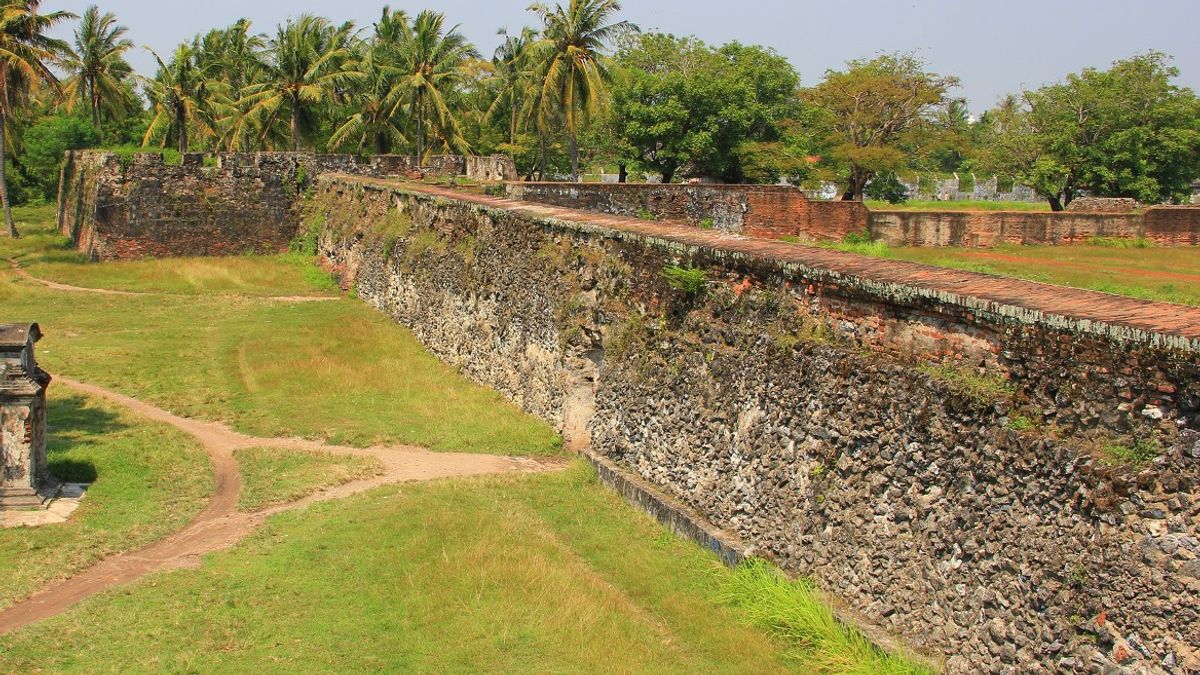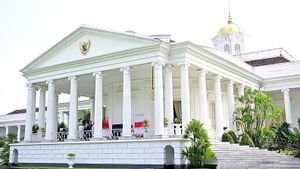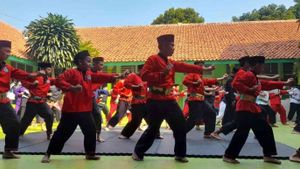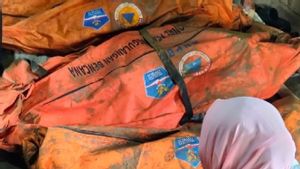JAKARTA - No one denies the existence of the Dutch trading airline VOC in the archipelago. The proofs of its success are still visible today. Speelwijk Fort in Serang, Banten is one of them. The fort was once dedicated to honor the famous VOC figure: Cornelis Speelman.
In the current era, the condition may not be complete. However, everyone has the right to imagine the shape of a fort that has two functions. Defense and settlements. The VOI Memories team was also curious. And here is our walk to Speelwijk Fort.
Explorations to cultural heritage buildings are often fun. In just one exploration, travelers are 'rewarded' two important things. Education and recreation. That's what we emphasized in our exploration of Speelwijk Fort, Wednesday, June 8th.
The distance of 99 Km from Jakarta to Kampung Pamarican (location of Fort Speelwijk) is not an obstacle for us to explore. Instead of being tired, we were excited to walk after dawn to Speelwijk. Our visit was greeted positively by the security officers of Fort Speelwijk.

The local officials also told us a lot. From the existence of the fort to the COVID-19 pandemic. When the pandemic greeted, Speelwijk Fort was not playing. Now conditions are starting to change.
Visitors started arriving. It didn't take long for the officer to introduce us to a guide. Sambudi, his name. Just like previous explorations, we were also given a special message by security officers: don't create mystery content.
"Please, we invite you to take pictures freely in the Speelwijk Fort environment. However, please understand in connection with the recently reopened Speelwijk Fort to be visited after COVID-19 yesterday."
"I can't be a resource person because I'm just maintaining security. Afraid to misunderstand. For more details regarding the history of Speelwijk Fort, you can ask Mr. Sambudi, as the kuncen. Here, there is nothing mystical about it,” explained the security officer.
Multifunctional FortressThe exploration began. We were accompanied by Sambudi. The middle-aged man held the master key to the two castle rooms. He also explained at length the function of the fort. The fort was not only functioned as a stronghold but also a place to live. In fact, inside the fort there used to be houses to churches. There is also a cemetery outside the fort.
Curiosity rose. The two rooms inside the fort made us curious. We headed there. Sambudi is happy to guide our steps. However, we are skeptical. We asked why the door had to be locked.
The answer worries us. Many of the visitors who came actually made the two rooms a location to urinate. Therefore, the room often smells bad. Sambudi took the initiative to lock it. So that the room is not bullied by visitors again, he said.
We entered the first room. Sambudi explained that this room is a room that has two functions.

First, this room functioned as a prison. second, as a ammunition store. The prison room is also used to torture anyone who is considered a traitor or criminal. From the natives to the Europeans.
The second room is not far from the first room. The position is even like facing each other. The VOC functioned as an administrative center. The main thing is the spice trade. Imagination of the magnitude of the VOC's power can be felt in the room.
History of Fort SpeelwijkSince time immemorial pepper commodity has been the main attraction of Banten. Moreover, at that time, Banten had become the number two pepper port in the archipelago. The abundance of pepper commodities is an attraction. People from all over the world scramble to come to Banten. especially the Netherlands.
Advances in commerce in the 17th century made the Sultanate of Banten improve a lot. Massive development was rolled out. The construction of a fort, one of them. all because the old Banten Sultanate Fort was no longer suitable as a defense area.
The Sultan of Banten, Sultan Ageng Tirtayasa (1651-1683) with his confidant Syahbandar Kaytsu stepped on the gas, initiating the construction of the fort in the 1670s. The owner of the power then appointed a Dutchman Hendrik Lucasz Cardeel (later known: Prince Wiraguna) as architect. That choice made sense considering that Cardeel was a famous builder of his day.
“This work seems to have lasted more than a year because, according to an account from April 1678 the fort on the seafront appeared to be nearing completion. But the realignment of the city's defenses continued. The renovation of the fort is still being carried out until the end of the following year. In the absence of more detailed information."
“Perhaps this information should be interpreted as a continuation of wall renovation work on other sides of the city which did not appear to have been planned in the original plan. Two clues lead us to this conclusion. We know that the three most important princes in the kingdom, namely Pangeran Kidul, Lor, and Kulon visited the fort in May 1678,” said Claude Guillot in the book Banten: History and Civilization of the X – XVII Century (2008).

Banten also only briefly enjoyed the glory of the new fort. The dispute between Sultan Ageng Tirtayasa and his son, Sultan Haji became the estuary. Sultan Haji, who has ambitions to become the ruler of Banten, understands that he will lose. However, tactics were played. Sultan Haji teamed up with the VOC to defeat his father.
His tactic worked. This invitation made Sultan Haji entrenched on the throne of the Sultanate of Banten in 1683. As a form of remuneration, Sultan Haji allowed the VOC to occupy the Sultanate of Banten. However, the Dutch rebuilt the fort which had been destroyed by the war. The fort was then called Speelwijk.
The name Speelwijk was deliberately chosen by the Dutch to honor one of the VOC's most meritorious officials: Cornelius Speelman. All because of Speelman's skill in playing the VOC's divide et impera (politics of division) strategy. Speelman's divisive politics worked for the VOC.
On the other hand, the choice of the name Speelman was a bad decision. Because, Speelman was also predicted as the forerunner of the VOC collapse. During his tenure as Governor General of the VOC, Speelman had many ulcers. Including perpetuating corruption to enrich oneself.
“The VOC itself is now entering a long difficult period. When Governor-General Speelman died in 1684, his corruption and abuse of power was exposed. It is said that he ruled without heeding the advice of the Council of the Indies."
"They have detained more than 100 people, who except one, now found not guilty, have sold free people into slavery, have authorized payments to soldiers, who did not exist and for work not done, and have pay below the price to the natives who supply pepper,” concluded historian MC Ricklefs in the book History of Modern Indonesia 1200-2008 (2008).
The English, Chinese, Japanese, Arabic, and French versions are automatically generated by the AI. So there may still be inaccuracies in translating, please always see Indonesian as our main language. (system supported by DigitalSiber.id)










